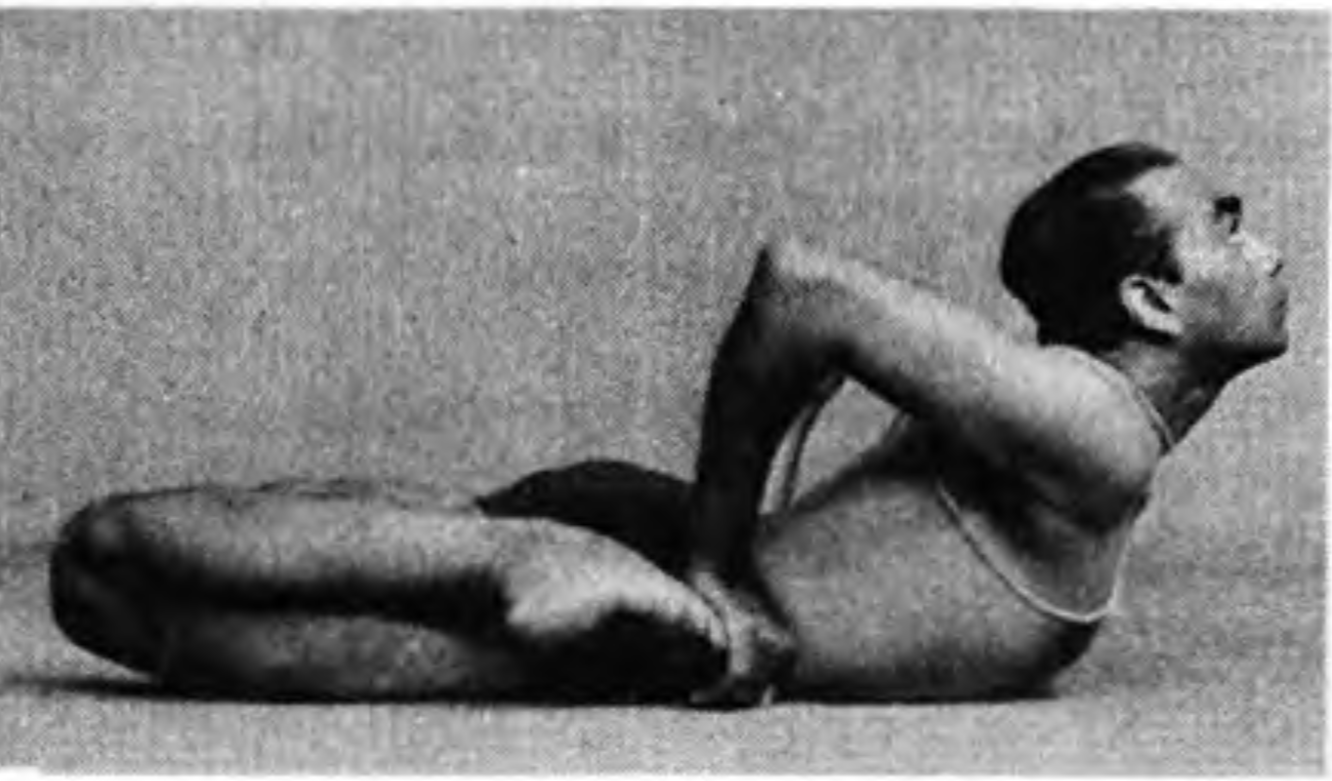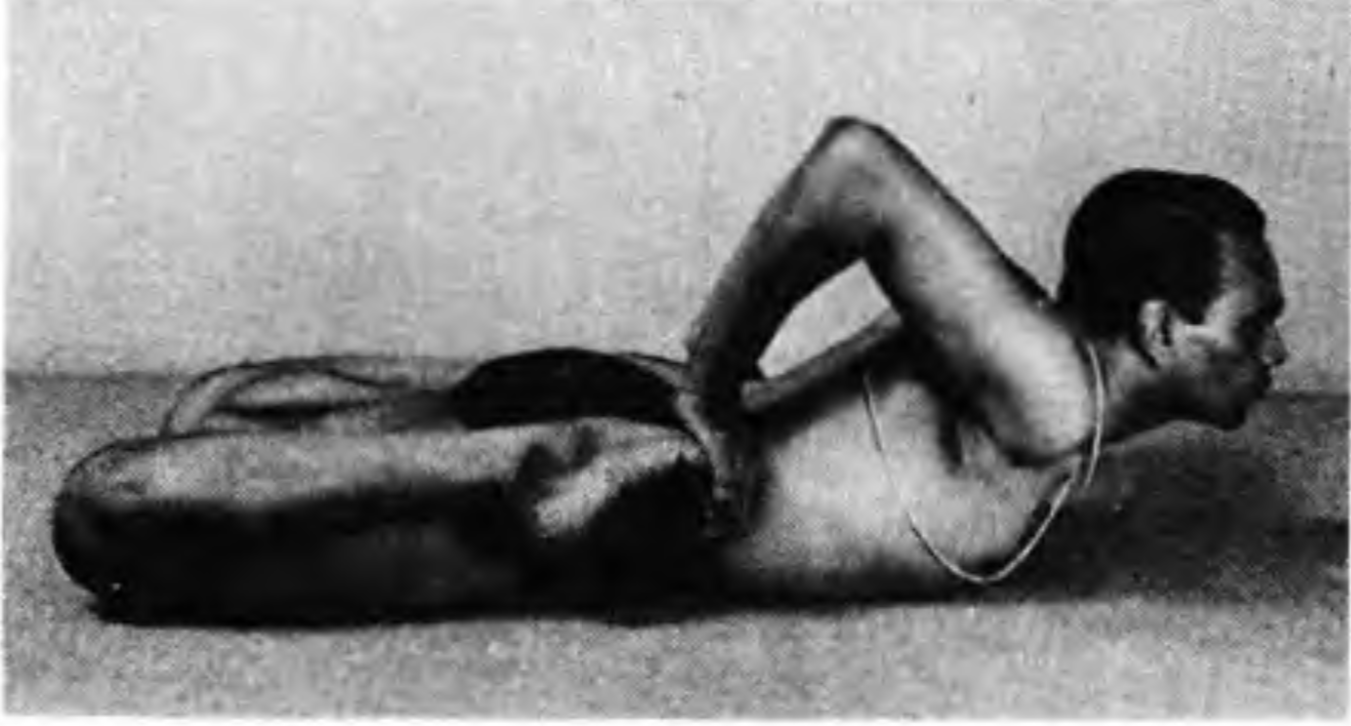Search your article
Bhekasana (Mandukasana)
Bhekasana (Mandukasana) – 4
Bheka means a frog. The action in this asana resembles that of a frog, hence the name.
Technique
1 . Lie full length on the floor on the stomach, face downwards. Stretch the arms back.
2. Exhale, bend the knees and move the heels towards the hips. Hold the sole of the right foot with the right hand and the sole of the left foot with the left hand. Take two breaths. Exhale, lift the head and trunk from the floor and look up.
3· Now tum the hands so that the palms touch the upper part of the feet and the toes and fingers point to the head. Push the hands further down and bring the toes and heels closer to the ground. Keep the arms from the wrists to the elbows perpendicular. (Plate 100.) When the knees and ankles become flexible, the heels can be made to touch the floor.
4· Remain in the pose from 15 to 30 seconds, but do not hold the breath. Exhale, release the palms from the feet, stretch the legs and relax.
Effects
The abdominal organs benefit from the exercise as they are pressed against the floor. The knees become firmer and the pose relieves pain in the knee joints due to rheumatism and gout. It also gives relief when there is any internal derangement of the knee joints. The pressure of the hands on the feet creates a proper arch and so cures flat feet. It helps sprained ankles and strengthens them. The pose also relieves pain in the heels. By continued practice of this asana, the heels become softer. Persons suffering from calcaneal spurs in the heels benefit from it as well as from Vidisana.


